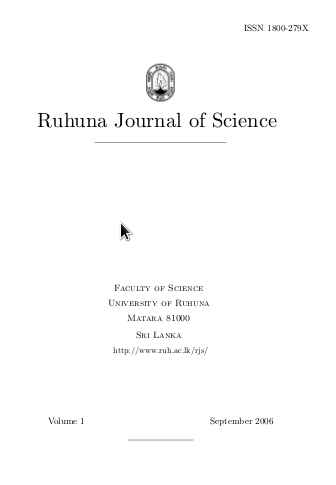Inferencing design styles using Bayesian Networks
Abstract
Reasoning with uncertain knowledge and belief has long been recognized as an important research issue in Artificial Intelligence (AI). Several methodologies have been proposed in the past, including knowledge-based systems, fuzzy sets, and probability theory. The probabilistic approach became popular mainly due to a knowledge representation framework called Bayesian networks. Bayesian networks have earned reputation of being powerful tools for modeling complex problem involving uncertain knowledge. Uncertain knowledge exists in domains such as medicine, law, geographical information systems and design as it is difficult to retrieve all knowledge and experience from experts. In design domain, experts believe that design style is an intangible concept and that its knowledge is difficult to be presented in a formal way. The aim of the research is to find ways to represent design styleknowledge in Bayesian networks. We showed that these networks can be used for diagnosis (inferences) and classification of design style. The furniture design style is selected as an example domain, however the method can be used for any other domain.References
Bouckaert, R.R., 1994. Probabilistic Network Construction Using the Minimum Description Length Principle, Technical Report RUU-CS-94-27, Department of Computer Science, Utrecht University.
Cheng, J., D. Bell, and W. Liu., 1997. Learning Bayesian Networks from Data: An Efficient Approach Based on Information Theory. in Sixth ACM International Conference on Information and Knowledge Management. New York, USA.
Connectedlines, The On-Line Furniture Style Guide. 1998.
http://www.connectedlines.com/styleguide/index.htm.
Cooper, G.F. and E. Herskovits, A Bayesian Method for the Induction of Proba-bilistic Networks from Data. Machine Learning, 1992. 9: p. 309-347.
Heckerman, D., 1995. A Tutorial on Learning With Bayesian Networks. in Twelfth International Conference on Machine Learning. Tahoe City, California, USA: Morgan Kaufman.
Jensen, F., 1994. Implementation aspects of various propergation algorithms in Hugin. reserach Report R-94-2014, Department of Mathematics and Computer Science, Aalborg University: Denmark.
Joachims, T., 1999. SVM light Super Vector Machine.
Korb, K.B. and A.E. Nicholson, eds. Bayesian Artificial Intelligence. 2003, Chapman & Hall/ CRC Press UK.
Lorensuhewa, A., B. Pham, and S. Geva., 2003. Application of Machine Learning Techniques to Design Style Classification. in The 8th Australian and New Zealand Intelligent Information Systems Conference, Macquarie University, Sydney, Aus-tralia.
Murphy, K., 2002. Bayes Net Toolbox.
http://www.ai.mit.edu/ murphyk/Software/BNT/bnt.html.
Pearl, J., 1988. Probabilistic Reasoning in Intelligent Systems., San Mateo, California: Morgan Kaufman.
Quinlan, J.R., 1993. C4.5: Programs for Machine Learning: Morgan Kaufmann.
Downloads
Published
Issue
Section
License
From Volume 7 (2016) onwards, all articles published in Ruhuna Journal of Science are Open Access articles published under the Creative Commons CC BY-NC 4.0 International License. This License permits use, distribution and reproduction in any medium, provided the original work is properly cited and is not used for commercial purposes.
Copyright on any research article published in RJS is retained by the respective author(s).
Authors who publish with this journal agree to the following terms:
a) Authors retain copyright and grant the journal right of first publication with the work simultaneously licensed under a Creative Commons Attribution License CC-BY-NC 4.0 International, that allows others to share the work with an acknowledgement of the work's authorship and initial publication in this journal.
b) Authors are able to enter into separate, additional contractual arrangements for the non-exclusive distribution of the journal's published version of the work (e.g., post it to an institutional repository or publish it in a book), with an acknowledgement of its initial publication in this journal.
c) Authors are permitted and encouraged to post their work online (e.g., in institutional repositories or on their website) prior to and during the submission process, as it can lead to productive exchanges, as well as earlier and greater citation of published work (See The Effect of Open Access).

